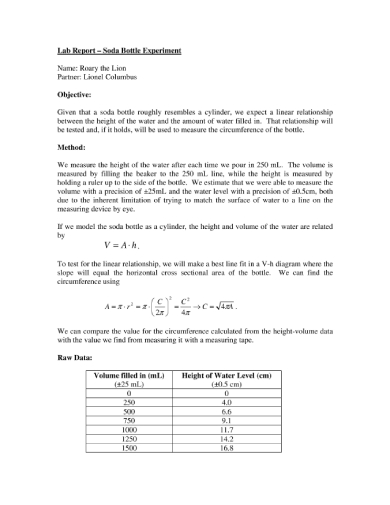

Resources for how to create citations can be found here.
PHYSICS SCIENCE LAB QUESTIONS FULL
These should be full citations, using the citation style recommended by your professor (if your professor does not require a particular style, you may use a style that is commonly accepted in your discipline). Here you cite any sources you used in the experiment. State what your results mean and how they relate to or answer your initial question or hypothesis. In this final section, you should concisely summarize your findings. You may also raise any questions that are suggested by the results, and discuss how these questions might be answered. If the experiment failed or you experienced problems during the experiment, discuss what might have caused this, and how it might be rectified in future experiments. Use this section to describe your observations during the experiment, and discuss your findings in relation to your hypothesis and to the literature referenced in the Abstract. Here is where you show your understanding of your experiment. If the experiment relies heavily on calculations, you may be asked to add a separate section or appendix for these, but these are not part of a standard lab report. Even if you suspect something may have gone wrong with your experiment, report your results just as you gathered them. What data did you gather? Did anything unexpected happen, or did anything go wrong? Usually, tables and graphs are used to present data in a more concise manner, but they must be accompanied by text as well. Now it's time to present the results of your experiment.

Check with your instructor if you are unsure. Lab reports are generally written using third-person passive voice ("Four soil samples were prepared") rather than first person active voice ("I prepared four soil samples"), but first person voice may be acceptable. When discussing theories, laws, or established procedure, use the present tense. When discussing the experiment, use the past tense, since the experiment has been completed. You do not need to provide a list of all materials used (unless you are specifically asked to do so), but in the course of your narrative you should mention any tools, equipment, or specimens you used. Be sure to include information such as exact measurements, temperatures, and timing. It's important that you be very detailed in your descriptions so that the reader could replicate your experiment. Here you describe the methodology of your experiment: what you did and what materials you used to do it. This section may be called either "Materials and Methods" or "Procedures", but in either case, the content is the same. If you do this, make sure to properly cite your sources! You may use such resources your textbook, journal articles, or books. In order to do this, you may need to refer briefly to the literature on the topic. In this section, you present the objective of your experiment and/or your hypothesis (why did you do this experiment? What problem are you trying to solve?), and give the reader the background information, such as relevant theories, necessary to understand your experiment.

Once you have written your report, you can more easily identify the required information and use it to build a good, comprehensive abstract. It must summarize the hypothesis or the reason for conducting the experiment, the methodology and materials used, the results and the major conclusion or conclusions. It should be short, usually no more than 200-250 words. The abstract is a condensed version of the report, containing all the most pertinent information in the document. "Different Ways to Find the Caffeine Content of Coffee Beans": Does not provide enough information, and uses unscientific and informal language. "Physics 110 Lab Experiment #3": This title lacks description of the experiment, so the reader has no idea what the report is about. sativa)": Describes the factors being manipulated (types of lighting), the parameter being measured (growth rate), and the subject of the experiment (red leaf lettuce the scientific name is also given for specificity). "The Effects of LED and Fluorescent Lighting on the Growth Rate of Red-Leaf Lettuce ( L. Extraneous words and informal language should be avoided.
/hispanic-student-working-in-chemistry-lab-169260902-57e6a0565f9b586c35e4d3f7.jpg)
Titles should be descriptive but efficient and straightforward, telling the reader precisely what the report is about. It gives the title of the experiment, the name(s) of the experimenters, the date, and the course the report was written for (if applicable).


 0 kommentar(er)
0 kommentar(er)
